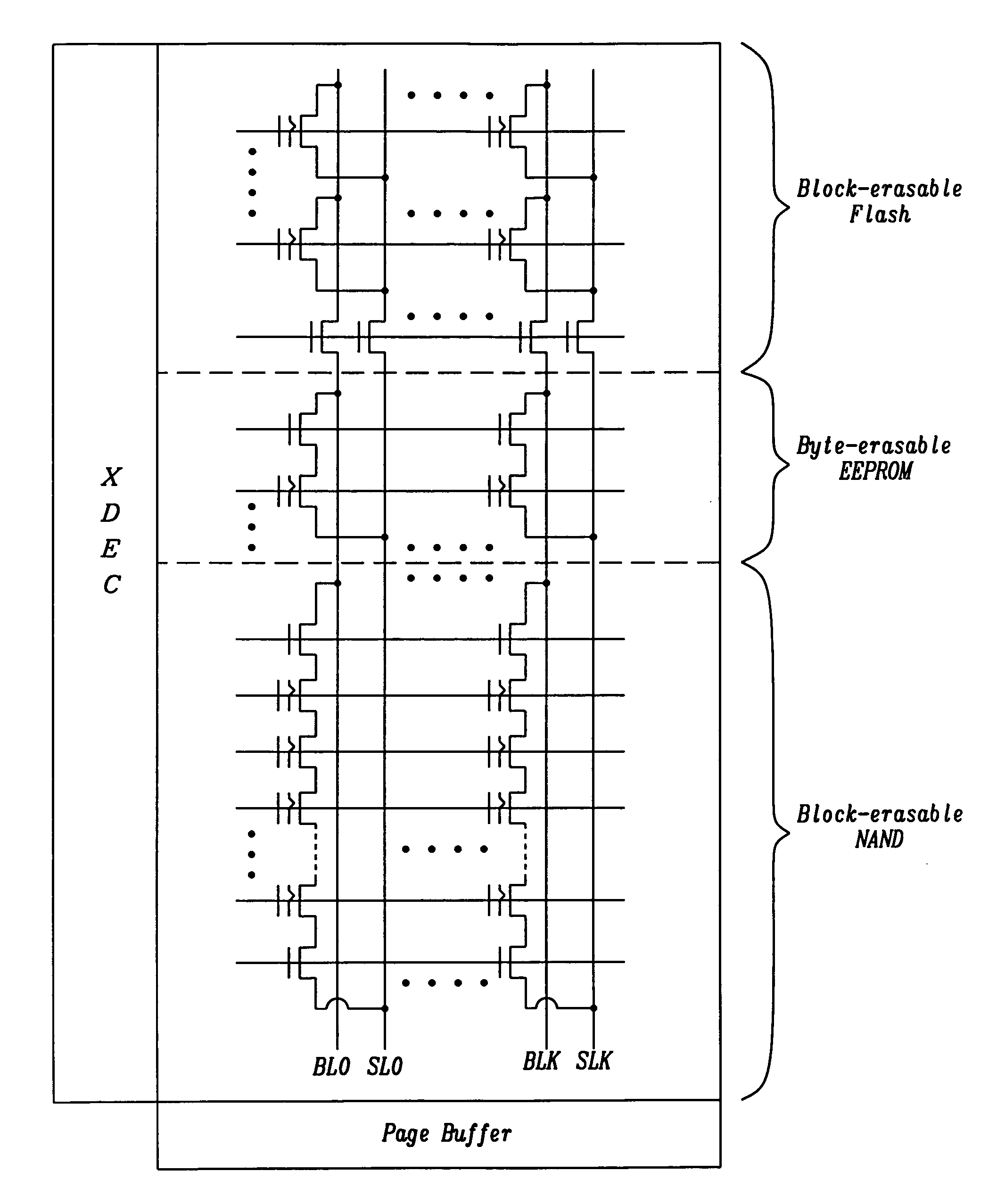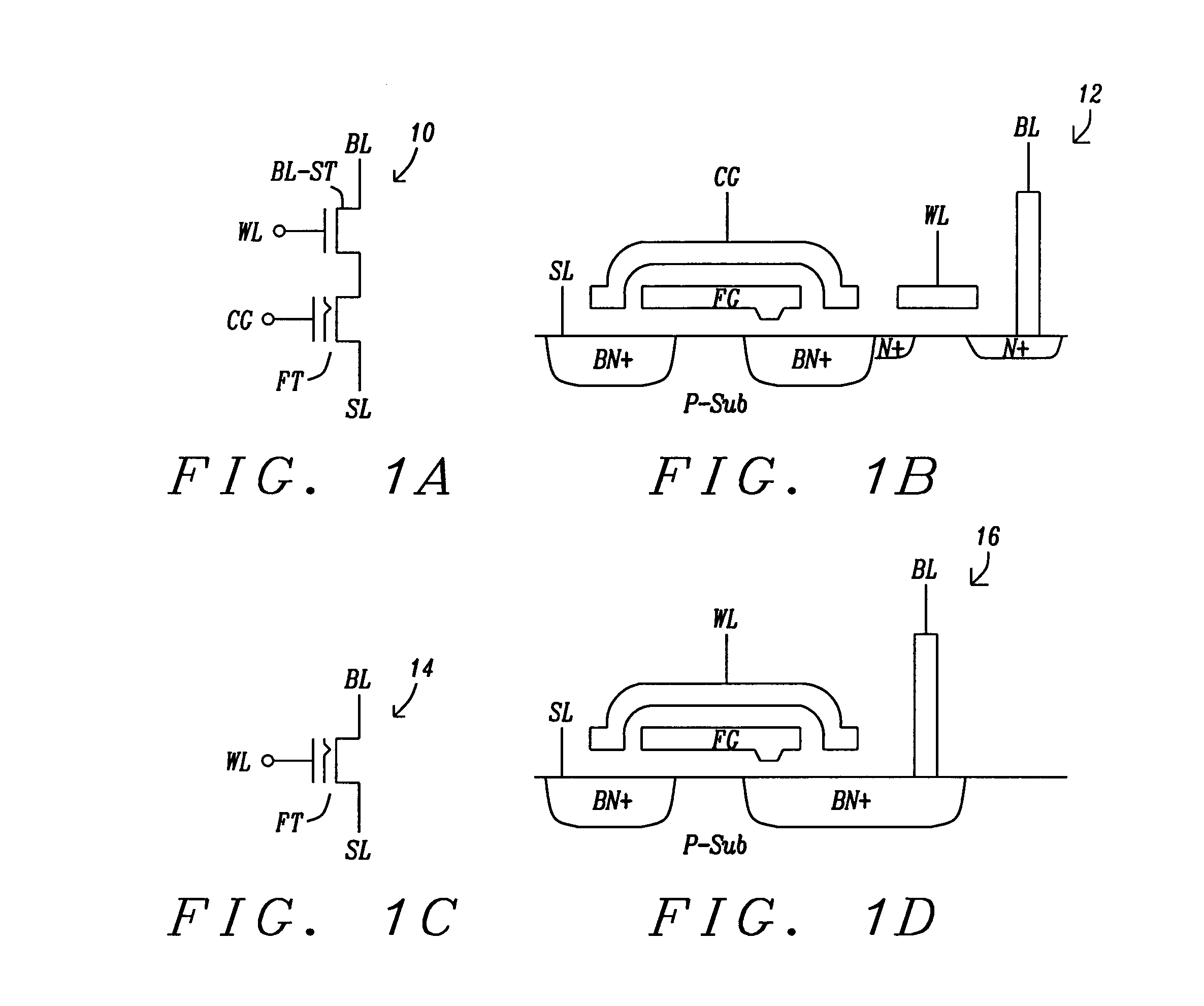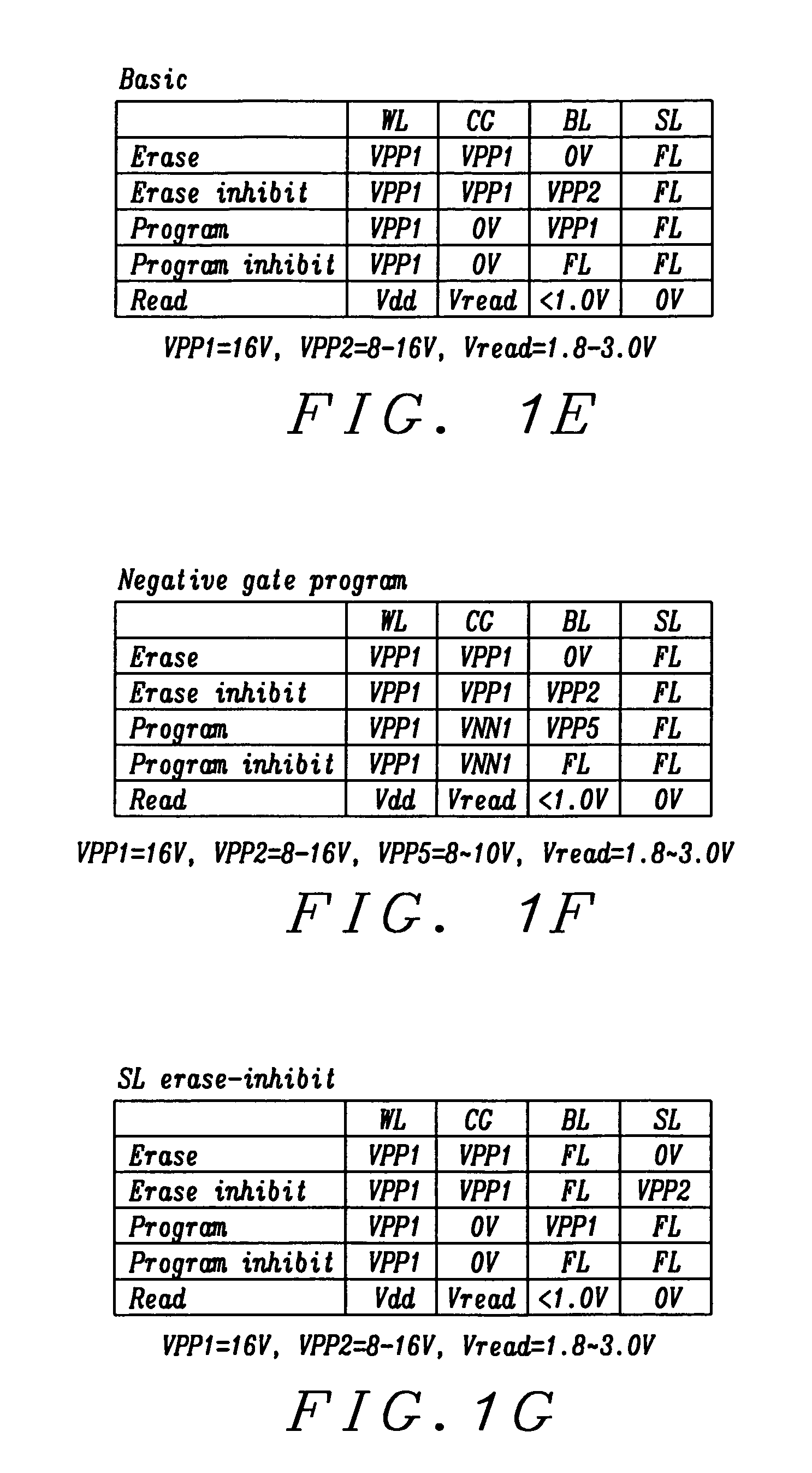Most compact flotox-based combo NVM design without sacrificing EEPROM endurance cycles for 1-die data and code storage
a combo nvm and endurance cycle technology, applied in static storage, digital storage, instruments, etc., can solve the problems of extremely high data changing rate, no flash-based combo nvm chip can meet the criteria now and for the future, etc., to achieve more reliable programming, and high data storage application changing rate
- Summary
- Abstract
- Description
- Claims
- Application Information
AI Technical Summary
Benefits of technology
Problems solved by technology
Method used
Image
Examples
Embodiment Construction
[0124]FIG. 1A, 10, shows a typical Flotox-based 2T EEPROM cell circuit of both prior art and the present invention. It comprises of two HV NMOS transistors such as 1-poly BL-ST transistor and 2-poly floating-gate FT transistor. The top BL-ST transistor is called the Bitline-Select transistor and is used to protect the bottom FT storage cell from being disturbed when 16V is applied to BL during the program operation. The source of FT is denoted as SL, and the drain of the BL-ST is denoted as BL. The gate of BL-ST is denoted as WL, while the gate of FT is denoted as CG. Note, WL stands for word line and CG stands for Control-gate of the floating-transistor. This 2T EEPROM cell typical has cell size of 100λ2 and is the largest NVM cell size so far. The on-chip operation needs maximum positive 16V VPP1 as shown in the attached tables.
[0125]FIG. 1B, 12, shows the cross-sectional view of the 2T EEPRPM cell shown in FIG. 1A. The CG on top is formed by the Poly2 layer used in peripheral dev...
PUM
 Login to View More
Login to View More Abstract
Description
Claims
Application Information
 Login to View More
Login to View More - R&D
- Intellectual Property
- Life Sciences
- Materials
- Tech Scout
- Unparalleled Data Quality
- Higher Quality Content
- 60% Fewer Hallucinations
Browse by: Latest US Patents, China's latest patents, Technical Efficacy Thesaurus, Application Domain, Technology Topic, Popular Technical Reports.
© 2025 PatSnap. All rights reserved.Legal|Privacy policy|Modern Slavery Act Transparency Statement|Sitemap|About US| Contact US: help@patsnap.com



